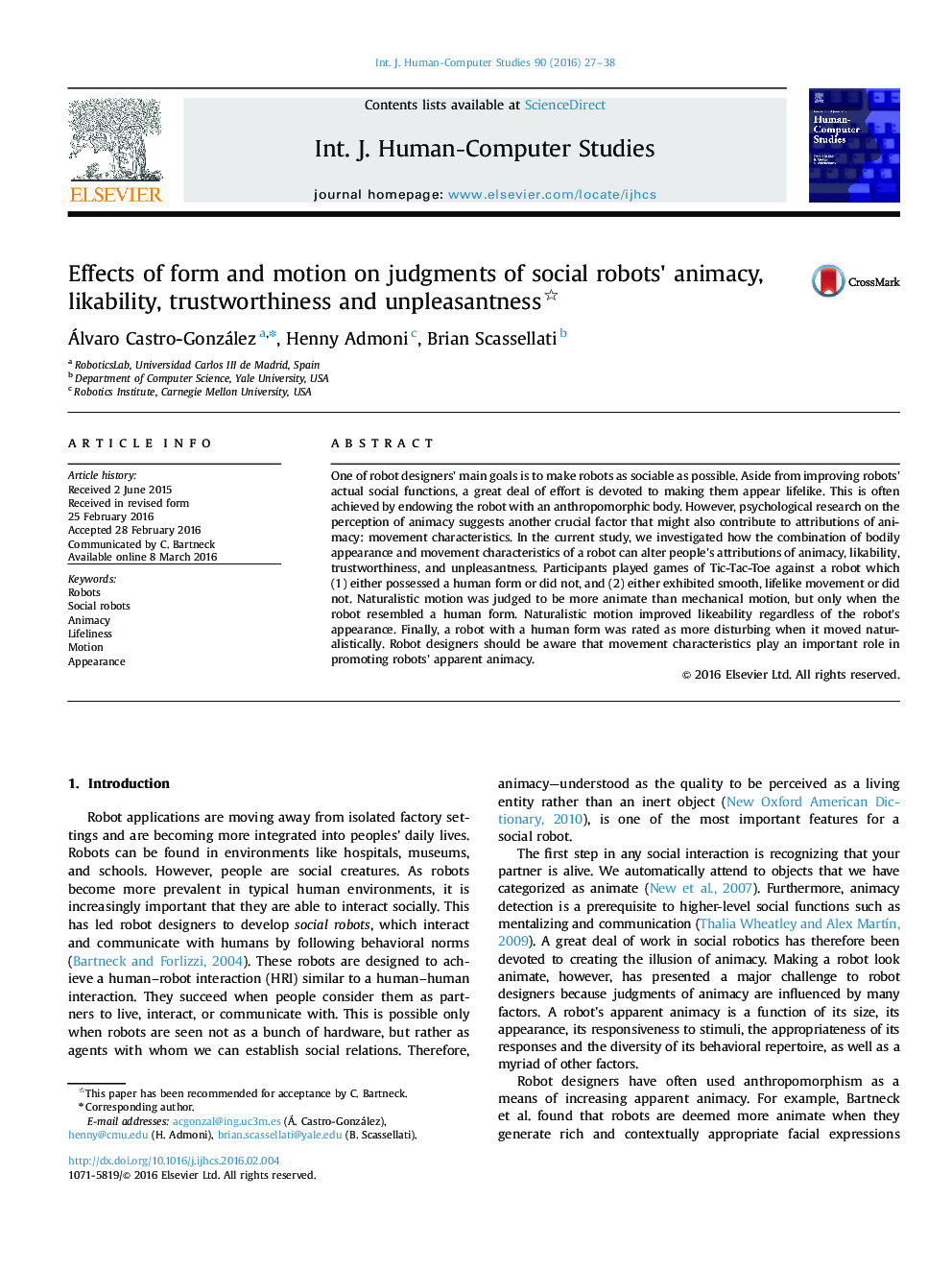| کد مقاله | کد نشریه | سال انتشار | مقاله انگلیسی | نسخه تمام متن |
|---|---|---|---|---|
| 400831 | 1438963 | 2016 | 12 صفحه PDF | دانلود رایگان |
• Movement characteristics influenced the robot׳s animacy, likability, and unpleasantness.
• Baxter was considered to be more likeable when it exhibited naturalistic motion.
• A full-bodied robot executing mechanistic movement was considered particularly inanimate.
• A full-bodied robot executing naturalistic movements was particularly unpleasant.
One of robot designers׳ main goals is to make robots as sociable as possible. Aside from improving robots׳ actual social functions, a great deal of effort is devoted to making them appear lifelike. This is often achieved by endowing the robot with an anthropomorphic body. However, psychological research on the perception of animacy suggests another crucial factor that might also contribute to attributions of animacy: movement characteristics. In the current study, we investigated how the combination of bodily appearance and movement characteristics of a robot can alter people׳s attributions of animacy, likability, trustworthiness, and unpleasantness. Participants played games of Tic-Tac-Toe against a robot which (1) either possessed a human form or did not, and (2) either exhibited smooth, lifelike movement or did not. Naturalistic motion was judged to be more animate than mechanical motion, but only when the robot resembled a human form. Naturalistic motion improved likeability regardless of the robot׳s appearance. Finally, a robot with a human form was rated as more disturbing when it moved naturalistically. Robot designers should be aware that movement characteristics play an important role in promoting robots׳ apparent animacy.
Journal: International Journal of Human-Computer Studies - Volume 90, June 2016, Pages 27–38
